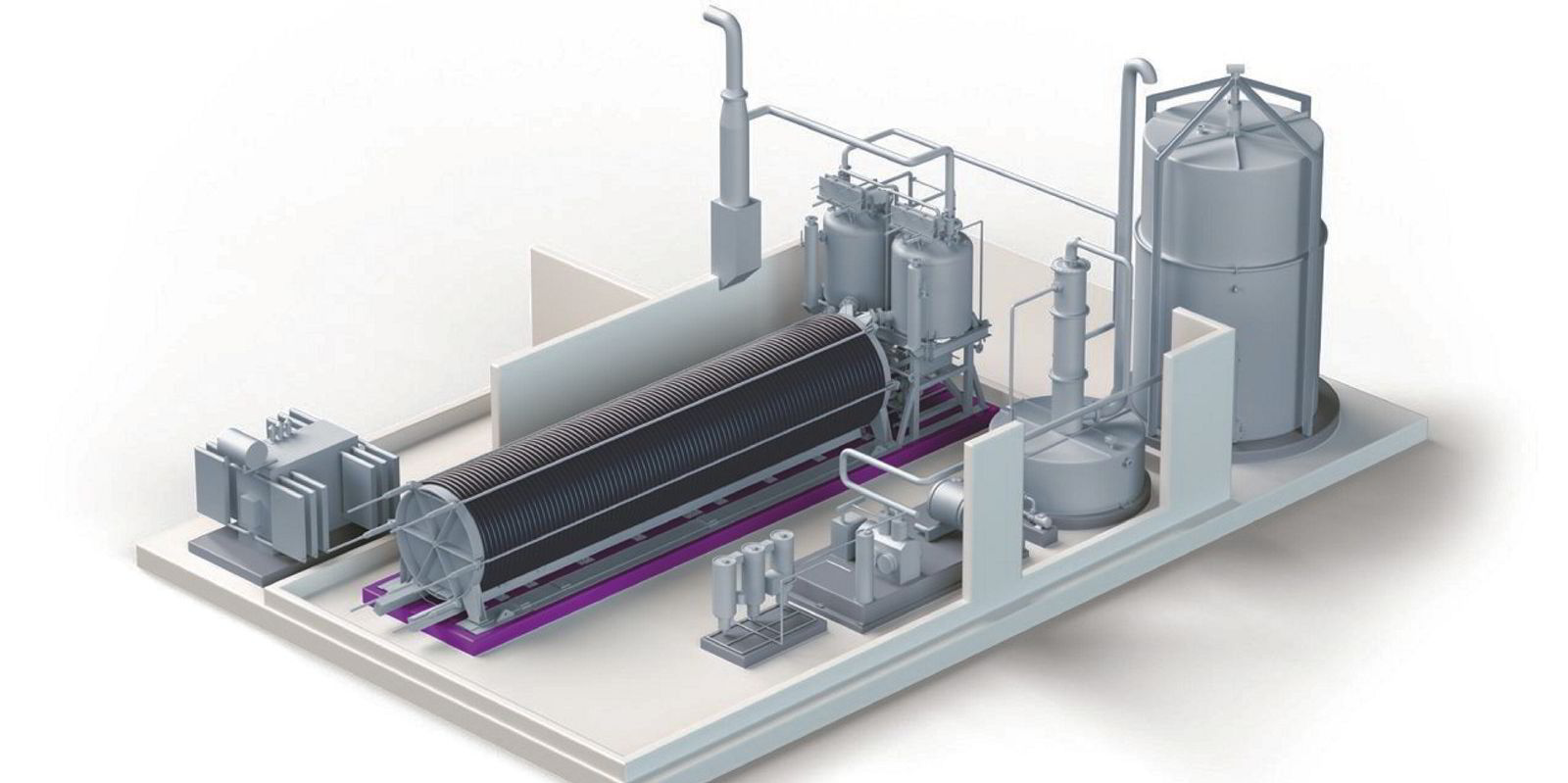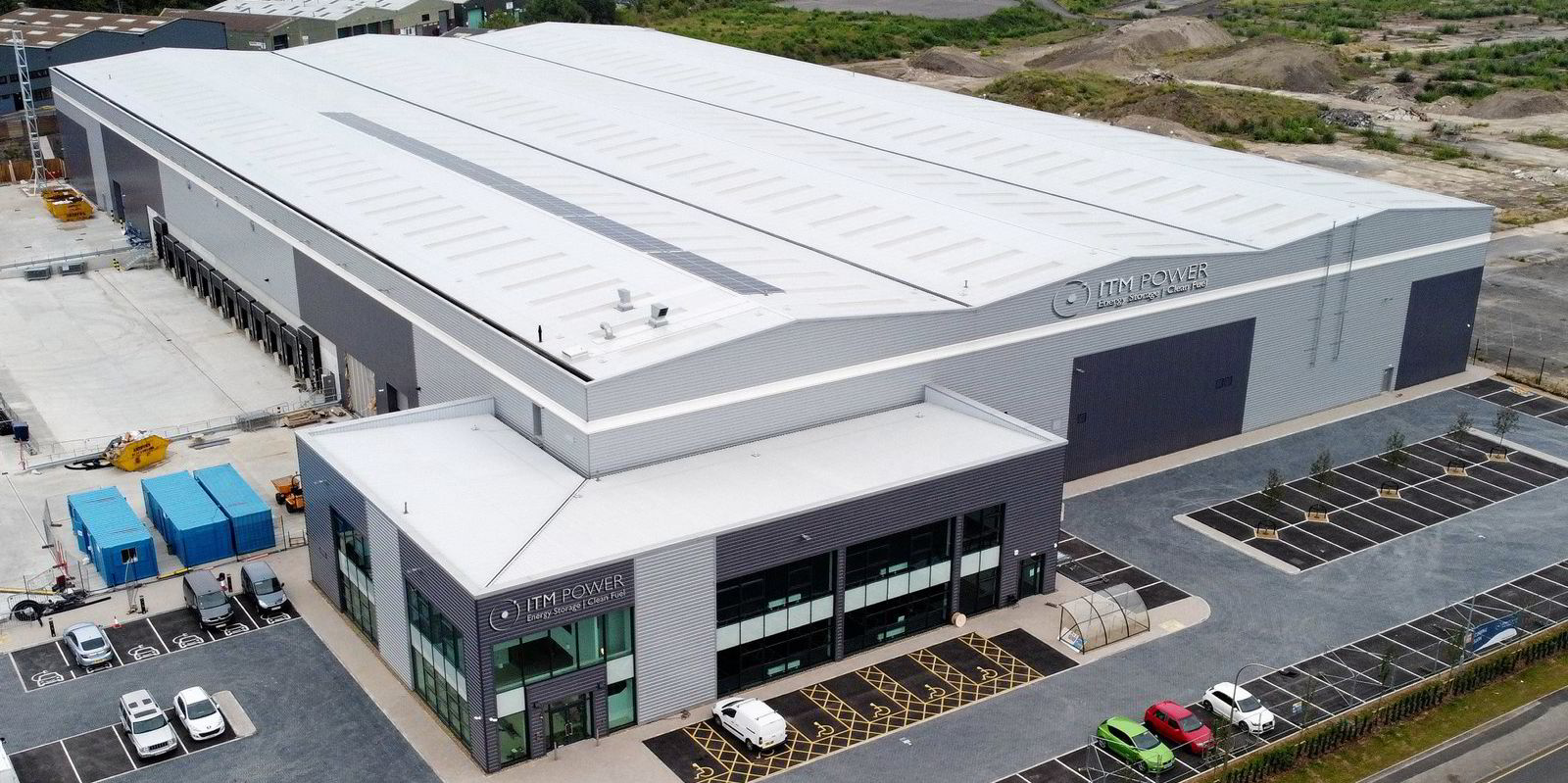US-based power company Cummins is to build a hydrogen electrolyser gigafactory in Spain in partnership with Iberdrola, it was announced on Monday morning.
The €50m ($61m) proton exchange membrane (PEM) electrolyser plant will start up in 2023 in the central region of Castilla-La Mancha, near Madrid, as a 500MW-a-year facility, “and will be scalable to more than 1GW/year”, according to Cummins.
It is the fourth electrolyser gigafactory to be announced in Europe this year, following in the footsteps of the UK’s ITM Power, Norway’s Nel and France’s McPhy. Denmark’s Haldor Topsoe has also unveiled plans for a 500MW plant producing high-efficiency high-temperature solid-oxide electrolysers.
The European Commission wants to see 40GW of green hydrogen electrolysis projects installed in the EU by 2030.
Electrolysers are machines that use electrical currents to split water molecules into hydrogen and oxygen.
“This initiative will accelerate the production of green hydrogen in Spain and will create a new industry, the manufacturing of electrolyzer systems, with high growth potential,” said Iberdrola CEO Ignacio Galán. “We continue to make progress in our ambitious plan to put Spain and Europe at the global forefront of this technology by reducing energy dependence and fossil fuel consumption while driving the country's economic and social revitalization.”
The partnership between Cummins and the Spanish utility giant includes the construction of the 230MW Palos green hydrogen project in Andalusia, Spain, which will supply H2 to ammonia fertiliser company Fertiberia.
Iberdrola previously signed a memorandum of understanding with electrolyser maker Nel to collaborate on more than 200MW of green hydrogen projects in Spain by 2023.
Alkaline (ALK)
This technology has been around since the 1920s and was widely used, particularly in the chemicals industry, before the natural-gas boom of the 1970s made steam methane reforming cheaper.
It is, however, the lowest-cost and most efficient form of electrolyser, particularly when powered by baseload sources. The electrolyte (electricity-conducting medium) is a solution of water and potassium hydroxide.
Proton exchange membrane (PEM)
This relatively new technology is said to be more expensive and slightly less efficient than ALK electrolysers, but is rapidly catching up on both fronts.
PEM has several potential advantages, which has led the technology to play a leading role in green hydrogen pilots — it can ramp up quickly and is highly efficient at low loads, meaning it is far better suited to the variable energy input supplied by wind and solar power. It also uses pure water as its electrolyte, so recovery and recycling of potassium hydroxide is not required; it can output hydrogen at higher pressures, therefore requiring less energy for compression; and it takes up around half the space of comparable ALK systems.
The downsides are that the technology is more expensive, requiring expensive platinum- and iridium-coated electrodes and ultra-thin specialty-plastic membranes — and is said to have a shorter lifespan than ALK electrolysers.
Solid oxide electrolysis (SOE)
This technology uses solid oxides or ceramics as its electrolyte, with high-temperature steam (rather than water) being separated into hydrogen and oxygen.
It operates at higher efficiencies than ALK or PEM, but requires a heat source, so would be perfect for use with clean electricity generation that produces waste heat, such as nuclear, concentrating solar power and geothermal. Low-temperature heat from industrial processes will work equally well.



